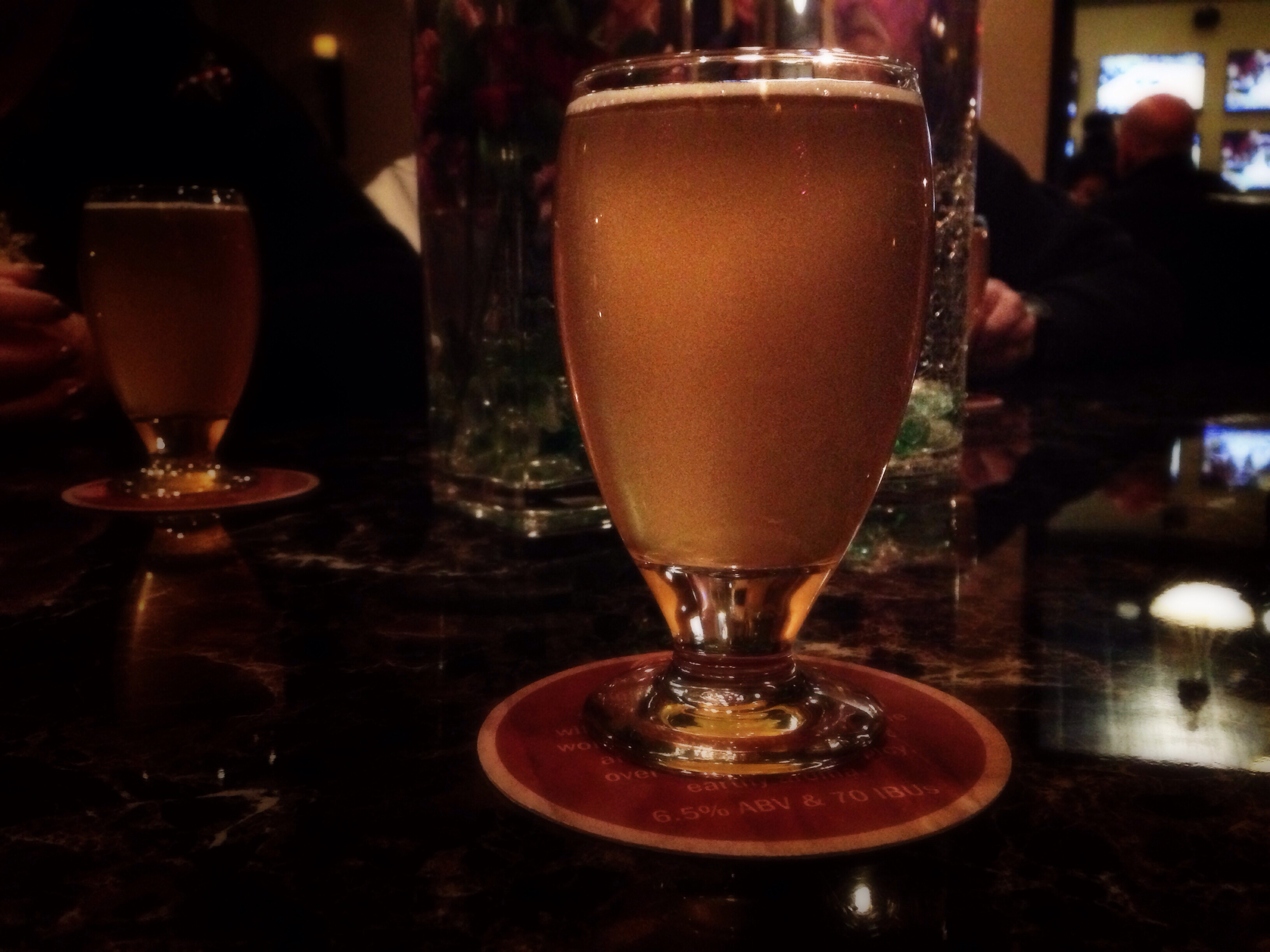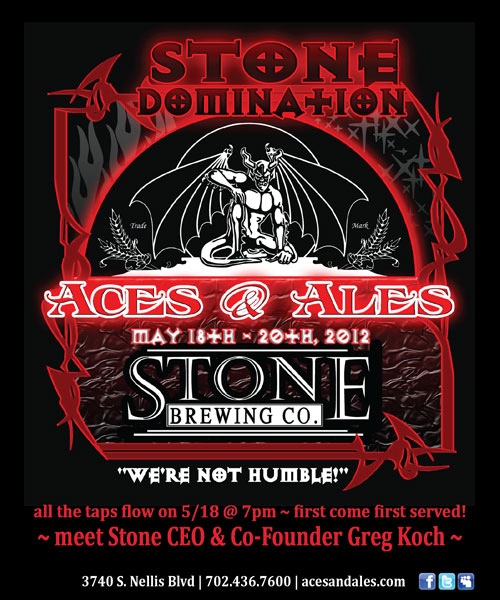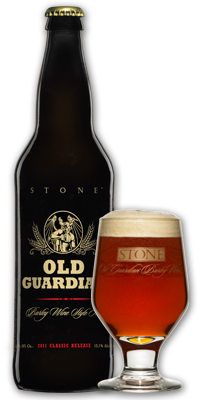If there’s anything in this world that I enjoy more than a make believe rabbit with antlers, it’s barley wine.
Fun fact: The first time that I visited Tenaya Creek’s brewery, I drank Old Jackalope Barley Wine.

 A properly aged beer is something that cannot be recreated without the hard work of actually being patient and waiting it out. It is incredible to taste the differences in a beer even just a year later. So, without further ado…
A properly aged beer is something that cannot be recreated without the hard work of actually being patient and waiting it out. It is incredible to taste the differences in a beer even just a year later. So, without further ado…
First of all, there are no rules. There are only suggestions, or even just hypotheses. The fact is, the exact same chemical changes happen within every bottle of beer as time progresses. Depending on some specific factors (alcohol content, hop content, beer style, etc) this chemical change can be called spoilage in one beer, or maturation in another. This is why guidelines exist for aging beers. Certain guidelines are generally true for most beers, some are not. The real truth, however, is that we all taste and perceive flavor differently. This is the biggest reason why aging rules vary so much. The effects of aging a beer are nearly always the same, but whether the effects are something that you want is another factor. That said, here are some things to consider: (more…)
We have created new Emily and Melissa Drink Beer videos! First up, Full Sail Brewing Company’s 2012 Old Boardhead Barleywine Ale.
For additional backstory behind these videos, read below
(more…)

I must confess, that as many times as I have frequented Aces and Ales, I have yet to attend either a dinner event, or Tuesday Night Tastings. This is not due to a lack of faith, as I have yet to enjoy a less than stellar dish during any eating experience at this establishment. Mainly, it’s simply due to life obligations sadly getting in the way of my palate’s enjoyment. Thankfully, both Luis and I were able to attend the recent Coronado Beer Dinner, and I must say, I can’t wait to attend the next!
(more…)
This past week, May 13th-19th, marked American Craft Beer Week. American Craft Beer Week is basically a week to celebrate the small and independent breweries and the fine work that they do.
For the first time that I can remember, local brewery Tenaya Creek went all out to ensure that craft beer fans got a chance to whet their palates with some rare offerings. Each day, Tenaya Creek released a new beer (sometimes more), and all are worth talking about. (more…)
If you read my post on glassware, then you should be aware of how important your sense of smell is in affecting your flavor perception. Going along the same lines of of proper tasting techniques, I thought I’d expand a bit further and talk about the flavors that you don’t want to taste.
Simply put, off flavors are the wrong flavors, the bad flavors, the flavors that aren’t supposed to be there. Why would anyone want to be able to recognize these flavors? If you are a brewer, it is important to know when something is negatively impacting the flavor of your beer. If you serve beer, it is important to know that you are serving your patrons the best quality beer, free from imperfections, to give them the best possible experience. What about all the other craft beer drinkers? Should they go through some sort of off flavor training? On the one hand, it is highly beneficial to be able to tell when the your beer in your fridge isn’t fresh anymore and should be tossed, or whether something is wrong with your beer when you go out to bars. On the other hand, once you learn to recognize off flavors, there’s no unlearning what you know. You’ll see (taste?) everything in a whole new light. Certain flavors will just stick out to you, but stay hidden to anyone who hasn’t gone through off flavor training.
I won’t go into too much detail about specific off flavors. Instead I want to focus on some guidelines of the two common places that off flavors become produced: During fermentation, and storage/serving.
During fermentation:
Most off flavors are actually normal byproducts of fermentation. If you go to White Labs’ website for example, they will give you the specific amounts of different off flavors that their yeast produce. Depending on the style, some of these off flavors are expected, and even desired. British yeasts will typically have more diacetyl than other yeast strains, and lager yeasts usually produces more acetaldehyde than other yeast strains. Improper techniques can exasperate these flavors far more than they should be, and they will then become detrimental to the beer.
There are other off flavors that can be produced durning production by other sources besides just the yeast. Again, these can be controlled by proper brewing techniques. These are out of a customer’s control, and thankfully, usually not noticed in commercial level brewing, so I won’t detail any of these specific flavors. Homebrewers however, would greatly benefit from studying these further. There are links at the end for further study.
Improper Storage/Serving:
All of the off flavors that can be produced during this stage can be prevented. Anyone who serves beer should be well aware of how to prevent these, as well as anyone who cares about drinking beer the way it’s supposed to be enjoyed.
The most common off flavor in this regard would be oxidation. Oxidation occurs when beer gets in contact with oxygen. Despite being sealed, beer bottles are not air tight and over time, will slowly get more and more oxidized. This is why it’s best to always drink beer fresh. Heat will increase the speed at which oxidation occurs, which is why it is best that beer stays refrigerated as much as possible.
Oxidized beers will develop a variety of different flavors, with papery/cardboard like being the most common. If you don’t understand what I’m talking about, suck on a wet piece of a cardboard box and you’ll get the idea. A little vinous or sherry like flavors can also develop. While these flavors are ideal in a barley wine (explained further here), in average alcohol strength beers, these flavors make the beer a bit unpleasant.
Keep beer out of sunlight, especially if it is a hoppy beer. Fun game: pour an IPA into a clear glass and leave it out in the sun for twenty minutes then drink it. Yeah, that’s what a skunked beer tastes like. The sunlight will literally take elements of the hop compounds in a beer, and convert them into essentially the same compound that gives skunk spray it’s wonderful aroma.
Lastly, if you serve beer from a tap, CLEAN YOUR TAP LINES! Beer has residual sugars and various trace minerals. Failure to clean tap lines means these sugars and minerals begin to coat the interior of the beer line. Once it starts to build up, it begins to harvest bacterias that alter the flavor of the beer. Typically, the flavor will start to become slightly acidic, or sour, and simultaneously becomes a bit buttery. The buttery flavor is from a compound called diacetyl, the souring is from a bacteria known as Pediococcus. To prevent these types of off flavors, it is important to clean your tap lines at least every two weeks! Only flushing your lines with water does not count as cleaning them. Sadly, to many bars around town, this standard sounds over dramatic. Trust me, there is a difference in flavor and aroma when you have a beer from a bar that cleans their tap lines regularly, and one that doesn’t.
For more information on off flavors, this guide from MoreBeer! is very helpful. Otherwise, feel free to ask!

Stone returns to Aces & Ales this year for Stone Domination on May 18th-20th. CEO and co-founder Greg Koch will be in attendance on the 18th for a meet and greet.
$15 gets you a 9oz Stone-etched tasting glass with your first fill included. Tasters are $4 each after that. Or you can get 12oz pours of all beers for $7 if you’d rather do without the commemorative glass.
Aces and Ales released the tap list for this event at the Great Vegas Festival of Beer. I’ve included it below for reference. You don’t want to miss this!
– Bruery/Elysian/Stone La Citrueille Cèleste de Citracado
– Jason Fields and Kevin Sheppard/Troegs/Stone Cherry Chocolate Stout
– Bottleworks 13th Anniversary Ale by Stone Brewing Co
– Stone 12th Anniversary Bitter Chocolate Oatmeal Stout Aged in Bourbon Barrels
– Stone 14th Anniversary Emperial IPA
– Stone 15th Anniversary Escondidian Imperial Black IPA
– Arrogant Bastard Ale
– Oaked Arrogant Bastard Ale
– 2011 Double Bastard Ale
– Cali-Belgique IPA
– 2010 Stone Imperial Russian Stout
– 2008 Stone Imperial Russian Stout Aged in Bourbon Barrels
– 2011 Stone BELGO Anise Imperial Russian Stout
– Stone IPA
– Stone LeVariation Ale
– Stone Levitation Ale
– Stone Mix Tape – GK & LU’s Blend Vol. 1
– 2010 Stone Old Guardian Barley Wine
– 2011 Stone Old Guardian BELGO Barley Wine
– Stone Pale Ale
– Punishment
– Stone Ruination Double Dry Hopped with Amarillo Hops
– Stone Smoked Porter
– Stone Smoked Porter with Chipotle Peppers
– Stone Smoked Porter with Vanilla Bean
– Double Dry Hopped Stone Sublimely Self Righteous Ale
The short article above points out that while Dogfish Head and Sam Adams may argue their “overrated” status as simply a result of their popularity, the truth is that a majority of the posts on the Beer Advocate thread that started all this, was based on the quality of product not matching the price charged for some of the more hyped beers.
I can see both sides of this argument. It is understandable that if you are going to spend more money on something, you expect it to be better than something that costs less. The other factor however, is that some beers simply cost more to make. Dogfish Head makes several seasonal beers that cost anywhere from $8-$16 for a 25 oz bottle. These beers will include ingredients that are not typically in traditional beers, causing the beer to cost more to produce and in turn, more to buy. However, most of these beers are unlike anything that costs less, both in magnitude of flavor and texture. Due to the intensity of these beers, an individual’s personal taste preferences play a much bigger role.
This leads me to believe that the reason people find Dogfish Head overrated, is because of both price and popularity. I think this is an overarching issue for craft beer in general; public interest in craft beer has grown tremendously without public knowledge of craft beer growing to match the interest. Many consumers are buying the higher end craft beers without fully understanding what it is exactly they are spending their money on, why it costs the way it does and when it would be appropriate to drink said beer.
Dogfish Head 60 Minute IPA costs around $8-$10 a six pack. 120 Minute IPA costs the exact same, but for only one 12 oz bottle. It has close to the same amount of ingredients as the six pack and takes much longer to produce. Economically, it makes sense why it costs what it does. However, this is not a “better” beer and it can never take the place of 60 Minute IPA in the situations where 60 Minute really shines. If you are having a barbecue on a hot summer day, I do not recommend you drink a six pack of a sweet, syrupy, 18% alcohol beer.
What is the right way to price beers? For beers brewed in America, I feel the current prices make sense. Granted, I’m comfortable enough in my knowledge to know what I’m getting into if I decide to spend a bit more on something. I’ve rarely (if ever?) spent more than $10 on a beer and didn’t like it. This isn’t to say that I have some sort if refined palate or anything, I just know what styles I appreciate and enjoy more and what styles are on the opposite end of that spectrum. There are certainly beers I would not pay more than $10 on. Not because they are bad beers, they are simply not styles that I like enough to spend that much on. I’ll happily spend more on a good barley wine or stout, but a Flanders ale? Not so much.
But what tools are available to the average consumer who may not know what their preferences are? As craft beer becomes more popular, I see the need for more professionals who have a strong knowledge of beer being needed in customer facing environments to help guide the consumers to the best choice for them. The staff at a retailer, restaurant or bar should be knowledgeable enough on their selection to help guide and educate consumers on what beers they should try and which ones they should be steering clear of. Otherwise, without these resources we are doomed to continue in the future of these polar views of what beer is good and what is overrated.
But not today. This one is going in the cellar. But, no promises that it will be there long!
Great suggestions from Food Republic. All of the suggested beers are very unique beers in that they are attempting to be a sort of “champagne beer,” either by using champagne yeast, being blended with wine, or using “Brett” bacteria to give it some wine-like tartiness.
If you are looking for a more traditional style of beer, but still want something fancy for New Year’s, here are four of my suggestions:
Chimay Grand Reserve
Nothing says celebration like a Belgian beer made by monks. This is my go-to special occasion beer. It’s a very good, balanced beer that pleases everyone, even the non-beer drinker types.
Stone BELGO Old Guardian Barley Wine
A very full flavored, robust beer. If you can’t find the BELGO version (which is very likely since it is only brewed every other year), then get it’s non-Belgian yeast-fermented, slightly less awesome brother.
Anchor Christmas Ale
Brewed once a year, specifically for Christmas and New Year’s. Well spiced without being overdone.
Tenaya Creek Imperial Stout
Being released today at Khoury’s Fine Wine! Either drink it this New Year’s or age it a year and drink it next year before the world ends!








